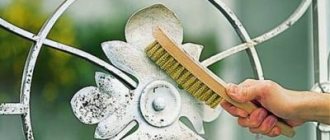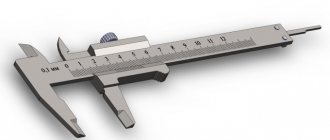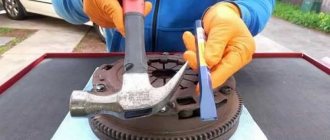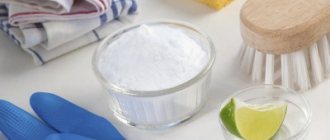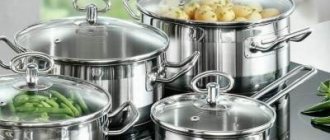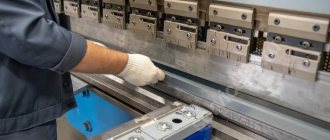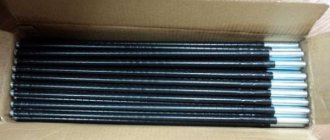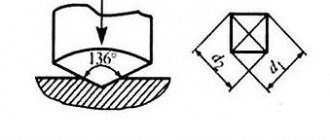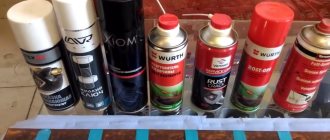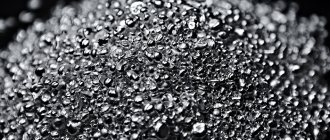When working with various metals and using structures made of this material for a long time, a person often encounters corrosion processes. They have a destructive effect on metal products and deteriorate their characteristics. To return structures to their former parameters, you need to know how to remove rust from metal.
Rusty metal pipes
Causes of corrosion
Before you figure out how to get rid of the consequences of corrosion processes, you need to understand what rust is and for what reasons it appears. Corrosion can be divided into two types:
- Chemical - occurs during prolonged exposure to gases on the metal surface. A clear example of this effect is the blackening of silver.
- Electrochemical is considered the most common type of corrosion. It can occur both on the surfaces of homogeneous metals and on alloys. Galvanic structures are formed on top of the material.
Causes of corrosion:
- Exposure to critical temperatures. Sudden change in temperature.
- Prolonged contact of a metal product with fabric materials.
- Prolonged exposure to acid or alkali vapors.
- Placing an item in a room with high humidity.
- Contamination of the metal surface.
Rust can also appear after improper processing of metal workpieces. For example, if inappropriate coolant was supplied while using the equipment.
Metal products will rust if they remain under water for a long time or in a container with acids and alkalis.
Heat treatment
Heat breaks down rust and is easy to remove with regular cleaning. Therefore, to combat the scourge, you can use the following tricks:
- if possible, pour boiling water over the object, wait for some time (until it cools down a little) and remove the loose layer;
- You can heat the device over a gas burner, gradually removing the easily removable deposit. To make the process faster, first apply hydrogen peroxide to the part;
- For those who have a steamer or steam mop at home, it's even easier: treat the rusty area with an intense stream of steam and scrub.
Methods for removing rust at home
You can remove rust from metal at home using various improvised means and chemicals. It is not necessary to process the structure with special equipment and power tools to achieve the desired result. Below we will describe methods that indicate how to clean metal surfaces from rust.
Hydrochloric acid
A popular cleaning method is to use hydrochloric acid to remove rust. Phosphoric acid has a similar effect. These two substances can be found in some housewives' kitchens or hardware stores.
When using acids, one must not forget about inhibitors. They will protect the metal surface from the negative effects of acid solutions. Otherwise, they will destroy not only the rust, but also the material itself.
Usage:
- First of all, a diluted solution is prepared. To do this, mix 50 ml of concentrated hydrochloric acid and a liter of clean water.
- Wear rubber gloves, take a brush and apply a layer of solution to the rust-damaged areas.
- Leave the coated product to soak for 30 minutes. The acid should work.
The acid is washed off with plain water. The surface is wiped with a dry cloth. Do not allow the acid solution to come into contact with exposed skin.
Hydrochloric acid
Hydrogen peroxide
You can remove rust from a metal surface using hydrogen peroxide. You can find this substance in any housewife's medicine cabinet. To clean the surface from damage caused by corrosion, you need to follow simple instructions:
- Pour a small amount of peroxide onto the damaged surface.
- Leave the substance for 5–10 minutes.
- Clean the damaged area with a metal brush.
Home DIYers enhance hydrogen peroxide with borax. The result is a powerful composition that prevents rust from spreading after cleaning.
Potato
You can remove rust using potatoes. To do this, you need to stick a knife, fork or spoon into a raw potato. Leave the item in this position for a day. A layer of rust should remain inside the tuber. Suitable for products that have just begun to rust.
Sparkling water
Metalworking experts often recommend using various fizzy drinks and the well-known Coca-Cola to clean metal surfaces. It is important that the liquids do not contain alcohol. Coca-Cola and similar drinks contain citric acid, which effectively destroys rust and prevents its further spread. Application:
- You need to soak a cloth scarf in Coca-Cola.
- Next, you need to thoroughly wipe the damaged area with a soaked rag.
Table acetic acid
To remove rust from metal, you can use table vinegar. It stops the corrosion process and dissolves rust. Usage:
- Initially, it is necessary to prepare a separate container larger than the size of the object being processed. Fill it with vinegar.
- Immerse the damaged item in vinegar for several hours.
- Clean the surface from rust residues using a hard sponge.
If you need to process a large part or surface, you need to soak a rag in vinegar and wipe the metal several times.
Lime and salt
Many may have heard how to clean rust from metal using lime and salt, but did not believe it. In fact, this is an effective mixture that removes the effects of corrosive processes. Usage:
- Sprinkle the damaged area with salt.
- Squeeze lime juice onto the treated surface.
- Leave the product under a layer of salt and lime juice for several hours.
The plaque is cleaned off with a hard sponge.
Dentifrice
Tooth powder is also used to remove rust from metal surfaces. To do this, you need to mix it with glycerin and dilute with water. Apply the resulting mixture to the damaged area and wait 10–20 minutes. Clean off plaque with a thick sponge.
Soda
Every housewife has baking soda in her kitchen. It is used to clean rust. Application:
- Mix soda with water. You should get a thick paste.
- Apply the composition to the area damaged by corrosion.
- Wait 30 minutes and clean the surface with a wire brush.
If it was not possible to remove the rust layer the first time, the procedure can be repeated.
Potatoes and laundry soap
This method is considered simple and effective. Potatoes can be found at any housewife. It helps to clean objects that have just begun to undergo corrosive processes. Usage:
- To carry out the procedure, you need to take a raw potato. It is advisable to choose a large tuber.
- Cut the potato in half.
- Sprinkle salt on half. Instead of salt, you can spread laundry soap on the half.
- Rub the potato onto the rusty area and wait 10 minutes.
Rinse off any remaining soap or salt with warm water. Wipe the surface dry with a towel.
Lemon acid
The practice of cleaning metal with citric acid is known. To enhance the reaction, it is mixed with vinegar. Usage:
- First of all, you need to prepare a cleaning solution. To do this, mix equal parts of citric acid and vinegar.
- Apply the resulting mixture to the damaged surface.
- Wait a few hours. Remove plaque using a metal scraper.
This composition can be used to clean clothes. It is enough to apply it to the fabric for 20 minutes and rinse with warm water.
Lemon acid
Oxalic acid
Oxalic acid is considered an active substance, the use of which requires compliance with safety precautions. The person needs to wear a respirator, safety glasses and gloves. Application:
- Initially, the damaged surface should be washed with soapy water.
- Wipe with a dry cloth.
- Mix 6 teaspoons of acid with 300 ml of clean water in a separate container.
- Place the item to be treated in a container with the solution and leave for half an hour.
After treatment, remove the deposits with a thick sponge.
Electrolysis
Perhaps the most “confused” and even slightly dangerous event. However, it also shows good results. Therefore, if you want to feel like a scientist in a laboratory doing an experiment, then go for it.
First, prepare everything you need: a plastic bucket that holds the entire part to be cleaned, baking soda, an oblong piece of steel, and a battery charger. So let's get started.
- Fill the bucket with water so that the item is completely immersed, and add soda there at the rate of 1 tbsp. l. powder per 4 liters of liquid. Mix well.
- Place the sacrificial anode (that same oblong piece of steel) in the liquid. It should be half in the water and the other half above the water. This element will attract particles of flaking rust.
- Attach the negative battery clamp (it is black) to a non-rusted area of the object being cleaned. If the part is completely covered with a red coating, then scrape a small area down to the metal mechanically.
- Immerse the product in the bucket so that it does not touch the anode. This is extremely important! Otherwise, a short circuit may occur.
- Attach the clamp with the positive pole (red) to the part of the sacrificial anode protruding above the water.
- Turn on the battery and wait 12–20 hours.
- After this time, turn off the device and disconnect the wires.
- Take out an already clean object and, if necessary, wash off any remaining rust with a brush. Rinse and wipe dry.
Chemical solvents and corrosion converters
Many people don't want to wait for hours for a layer of rusty deposits to soak and move away from the metal. To reduce waiting time, you can buy a special cleaner at a hardware or hardware store. Special compounds quickly clean the metal from the effects of corrosion. They are used in auto repair shops, in production, and in metalworking.
Purchased formulations are divided into two groups:
- Converters - used to apply a protective layer to metal.
- Solvents - used to remove a layer of rust.
Converters
Converters are special solutions made from tannin or phosphoric acid. In the store you can find converters in the form of a liquid, suspension or emulsion. It is considered a chemical way to protect metal surfaces from the development of corrosion processes. Before applying the converter, the metal must be cleaned of crumbling deposits.
Solvents
To quickly remove rust from metal, you can use a special solvent. A well-known effective remedy is the composition “BCH-1”. It is easy to apply to damaged areas.
The active components of solvents are phosphoric or oxalic acid. Instructions for use are indicated on the plastic container. Due to their low price, such compositions are popular in home workshops.
A little chemistry to understand the process of rust formation on metal
Rust is a product of iron oxidation. Most often it is a chemical compound Fe₂O₃. This oxide gives a reddish tint. However, dark inclusions can often be observed.
They indicate that the metal has not only trivalent properties, but also divalent properties. Therefore, the oxide will be written with the chemical formula FeO.
Based on numerous studies, it has been established that Fe₂O₃ predominates. It occurs in 85...88% of cases.
Information for the curious. Iron is smelted from ore. It is usually denoted as a Fe₃O₄ compound, but this formula does not give the real picture. In nature, the compound occurs in blast furnaces at temperatures above 850 ⁰C.
In the open air, iron actively interacts with oxygen in the air. Therefore, an oxide film forms quite quickly. In practice, to prevent oxidative processes, the metal surface is protected.
The density of the oxide film can be different. If a steel object has been exposed to the open air for a long time, the metal may be riddled with holes consisting of oxide (rust). In fact, it completely loses its properties.
Items that have recently been left without additional protection are covered with only a thin coating. The thickness of the oxide film is measured in microns. In such a case, the strength of its adhesion is insignificant. It can be easily removed from the surface.
Attention! Iron oxide FeO is considered protective. If this particular compound is present on the surface, then it does not allow red rust (Fe₂O₃) to spread. Bivalent oxidation occurs when the metal is heated above 250…270 ⁰С.
When smelting iron from ore under the influence of high temperature, processes of metal reduction with carbon and hydrogen occur:
- 3Fe₂O₃ + CO = 2Fe₃O₄ + CO₂;
- Fe₃O₄ + CO = 3FeO + CO₂;
- FeO + CO = Fe + CO₂;
- 3Fe₂O₃+ H₂ = 2Fe₃O₄ + H₂O;
- Fe₃O₄ + H₂ = 3FeO + H₂O;
- FeO + H₂ = FeO + H₂O
In addition to the formation of pure iron Fe, iron carbide Fe₃C is formed in the blast furnace process. The reaction of its formation occurs at a temperature of 950...1000 ⁰С.
3Fe + 2СО = Fe₃C + CO₂.
The flue gas contains carbon monoxide CO₂ and water vapor H₂O. At a temperature of 1536 ⁰C, iron Fe melts.
In nature, the opposite process occurs. At the same time, cast iron, due to its high iron carbide content, oxidizes several times slower than steel.
Important! Steel is considered a mechanical combination of iron and carbon, provided the content does not exceed 2.14%. As the carbon content increases, the alloy becomes cast iron.
Physical methods
Knowing how to clean rust from metal using chemical compounds or folk remedies, you can effectively combat corrosion processes on small products and surfaces. However, this is not enough. In such situations, you can try using special anti-rust tools. These include:
- Wire brush or crumpled foil. It is advisable to initially let the plaque soak using the methods described above.
- Sandpaper. The grain size is selected depending on the damage and type of work. If final cleaning is required, you need to select a fine fraction.
- Cleaning with a grinder or grinder. Power tools help to effectively clean large metal surfaces in a short period of time. It is important to choose the right disks for stripping and know how to use the tool.
Cleaning with a grinder
To remove rust from large structures, special equipment is used, for example, a sandblaster.
Mechanical cleaning
A small amount of rusty deposits can be eliminated through mechanical action. Sandpaper, a sanding machine, a metal brush, sandblasting machines and other tools will help with this at home. They can also be used to remove a thick layer before applying any chemical solvent.
The disadvantages of the method are the possible incomplete removal of corrosive particles, especially in shaped objects. In addition, the method cannot be used for all surfaces. For example, cleaning plumbing fixtures in this way is a bad idea.
Preventive actions
To protect metal from corrosion, you can perform a number of preventive procedures:
- After moisture gets on a metal surface, wipe it dry with a cloth.
- Store metal products in areas with low humidity.
- If you need to paint a surface, first of all, it needs to be cleaned of the old decorative layer. Then remove dirt, degrease and apply primer. Only after the primer can a coat of paint be applied.
When removing rust, you can combine several methods.
This will increase the cleaning efficiency. People who do metalworking, repair cars, or work with metal tools need to know how to clean the material from corrosion. It is not necessary to use special equipment for this. It is enough to use available means.
Professional products
Professional chemicals help quickly remove complex stains. Converters and solvents come in different forms: liquid, spray or gel. The technician does not need to worry, because everything that is necessary to remove rusty deposits is already included in the chemical - this is the main advantage.
Solvents
Any solvent will help clean a rust-covered element. Effectively removes kerosene and diesel deposits. The process is long, the element must be kept in the active substance for about a week. During this time, the rust will completely dissolve, and the metal itself will remain intact.
Converters
To clean metal parts, you can use special anti-corrosion converters. Such compositions form a special protective film and act without damaging the material itself. Products can be acidic or neutral. In the latter, the active component is zinc.
To remove rust with a converter, you need to follow this algorithm:
- Clean the item from dirt and loose rust using a metal brush or sandpaper.
- Rinse the metal with water, dry it, and degrease it with white sprit.
- Apply the converter to the metal in 1 layer, and after 30 minutes repeat the procedure.
Attention! It is professional products that ensure effective rust removal without losing the properties of the material being processed. Their only drawback is the price. The cost of the converter is much higher than that of other available purifiers.
Lemon acid
Citric acid powder does an excellent job of removing iron oxide from the surface of steel objects without damaging the metal. Cleaning instructions are simple:
- Wash the rusty item in a soapy solution (10 ml of liquid detergent per 1 liter of warm water).
- Pour warm water into a plastic container and add citric acid powder (50 g per 1 liter of liquid). Stir.
- Dip a rusty object into the solution and leave it for a day.
- Remove the tool and inspect it. If the oxide does not come off in places, scrub with a brush.
- Wash the treated metal in a soap or soda solution to prevent oxidation, and sand it with sandpaper.
S. Potapkin and Y. Maricheva, authors of the work “Handbook on Home Economics. 1000 practical tips for all occasions”, they recommend rubbing the treated areas with hot fine sand or wood ash after removing rust. Afterwards, if necessary, the cleaned areas are painted over.
Method 1. How to remove rust stains from clothes using glycerin and chalk
Before removing new rust stains, the item must be washed; it is advisable to use conditioner when washing. After this you need:
- for cleaning you need to prepare a mixture (mix the components in equal proportions: 100 g of chalk and 100 ml of glycerin in 60 ml of water);
- moisten the contaminated area and apply the prepared mixture to the area of fabric with the stain;
- place the product in a plastic bag (usually leave for 10-12 hours);
- dry the fabric at a temperature of 18-20o C;
- Finally, wash the product using laundry soap. The result will please you.
